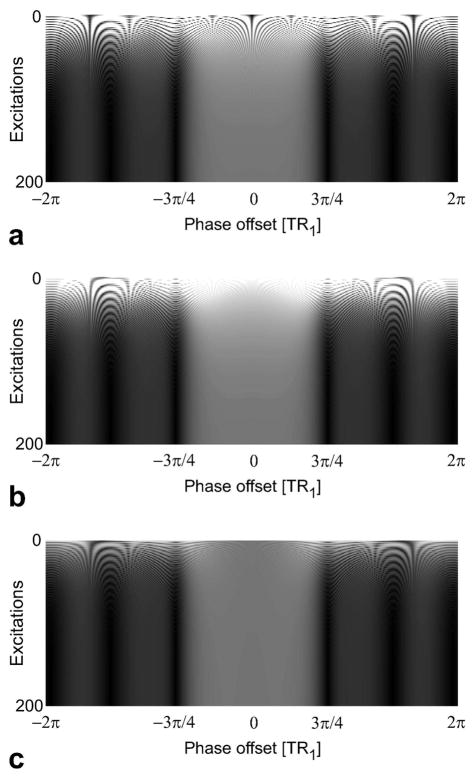Figure 6.
The transient signal in the 2-2-1-1 pass- (phase offset in the ±3π/4 range) and stop-bands is shown as a function of the number of excitations with a: no preparation, b: a single-tip preparation, and c: a reduction of the magnitude of the magnetization vector followed by the single-tip preparation. Assuming α = 60° and T1/T2 = 1000/200 ms for the 2-2-1-1 sequence, the single-tip preparation was a −30° pulse applied TR4/2 prior to the first RF pulse (with zero phase), and a single 64° pulse was used to reduce the magnitude of the magnetization vector to its steady-state value at on-resonance. Without any preparation, there are significant signal oscillations, and the initial signal level is much higher than the steady-state level. The oscillations are substantially reduced over the pass-band with a single-tip preparation. Finally, the magnitude reduction instantly decreases the signal level to its steady-state value at on-resonance. This also reduces the signal oscillations in the stop-band. It is important to note that the flatness of the multiple-TR pass-band improves the efficacy of the single-tip preparation.

